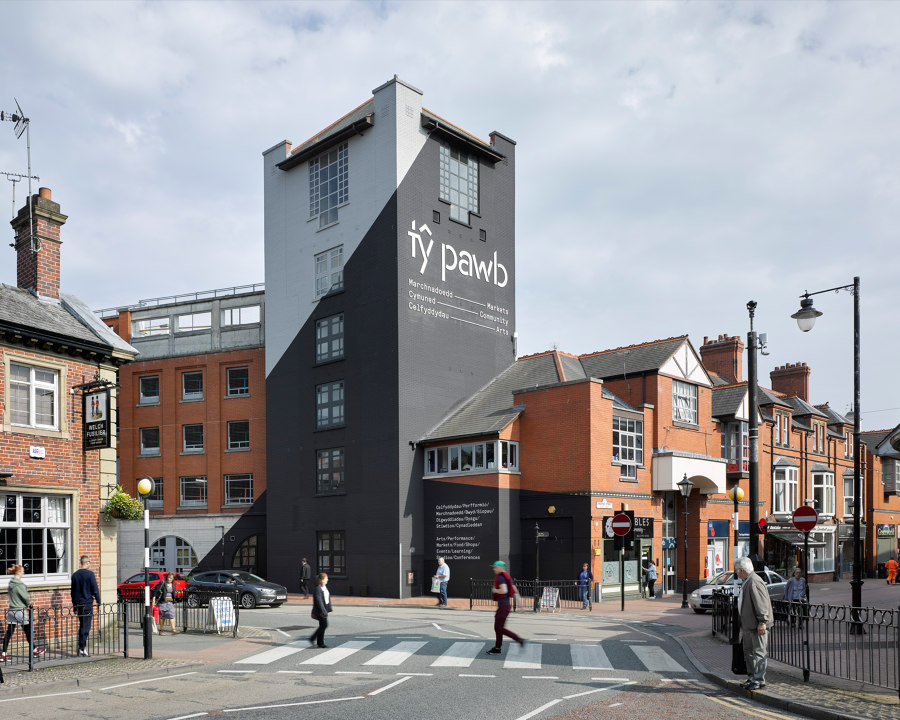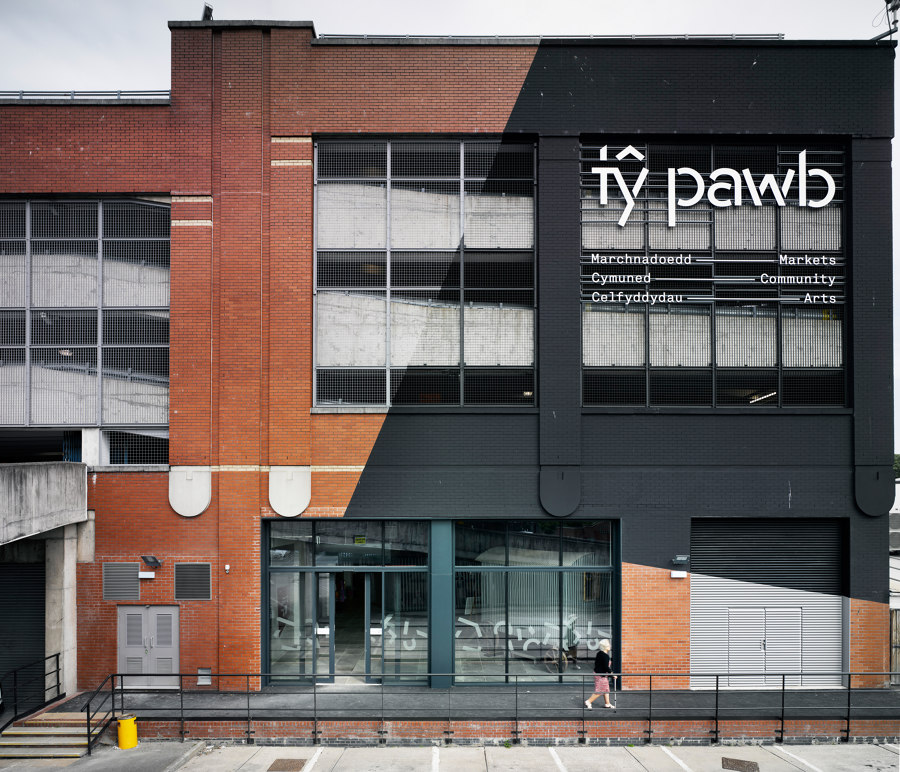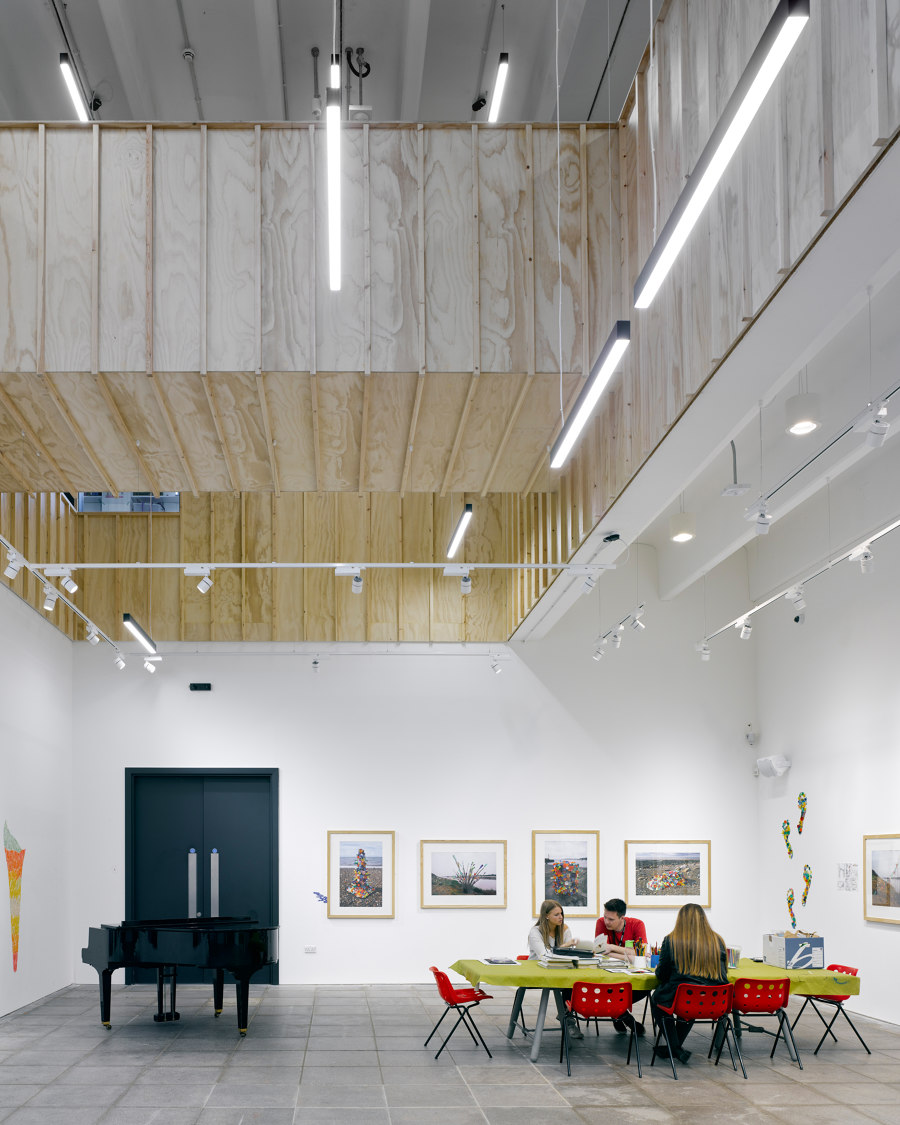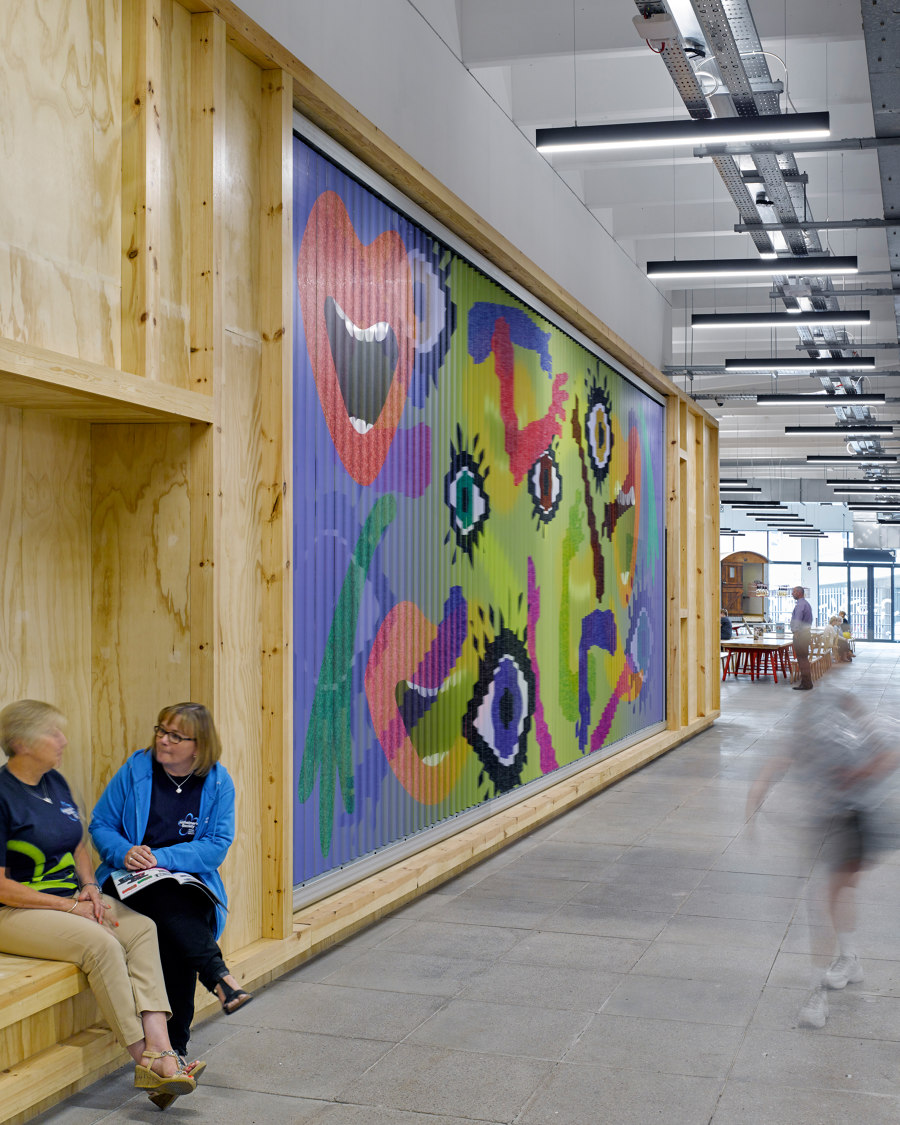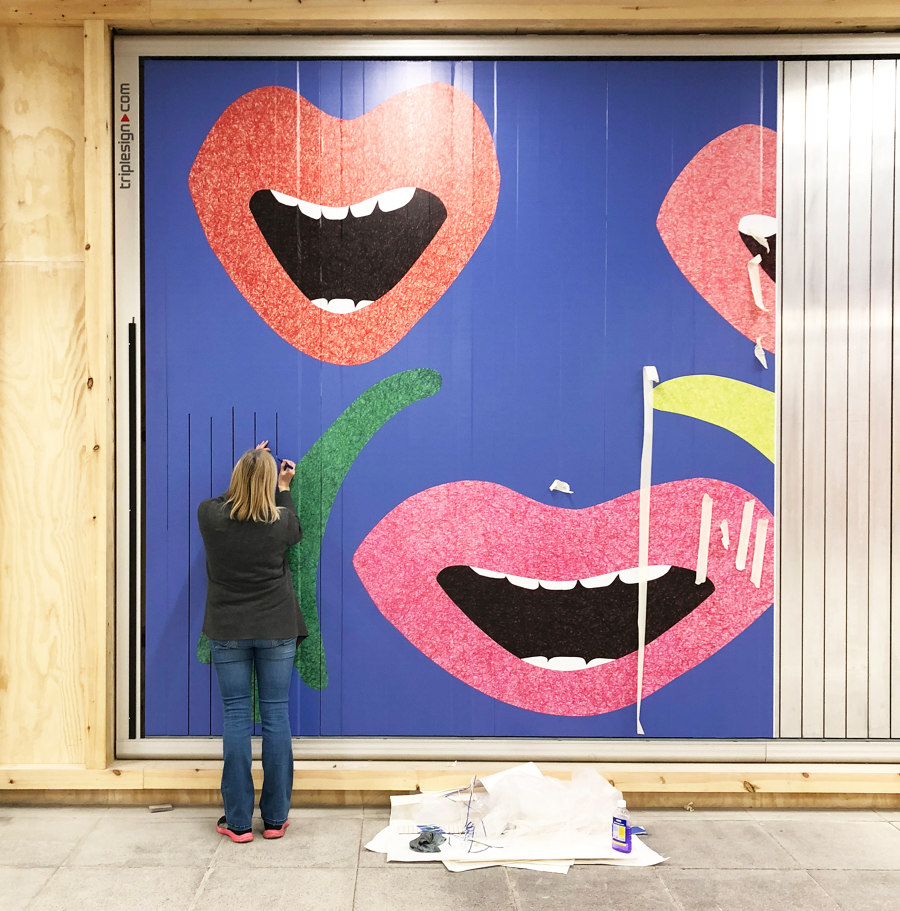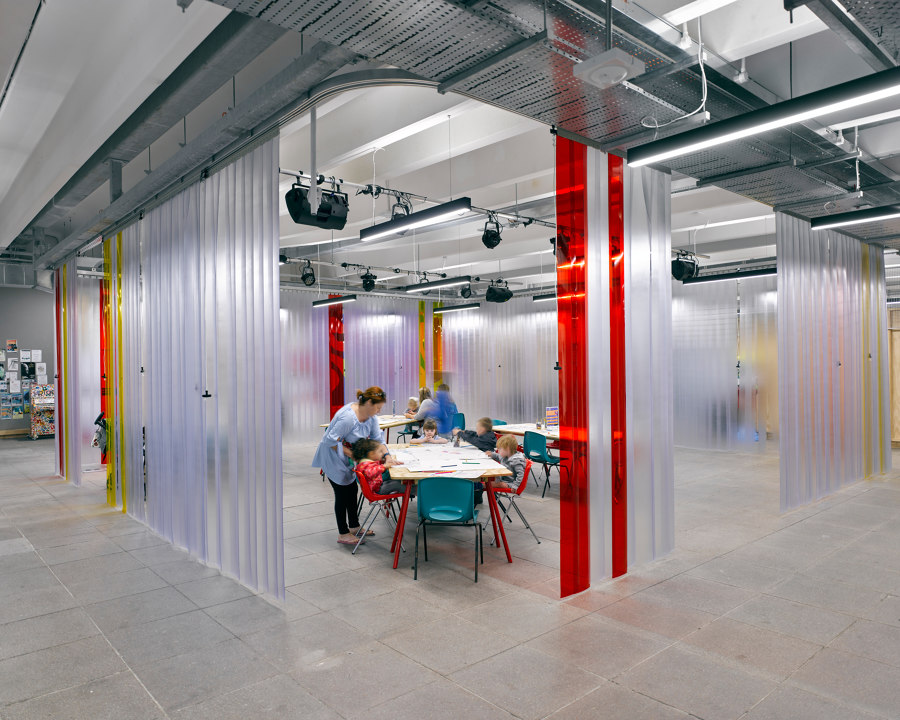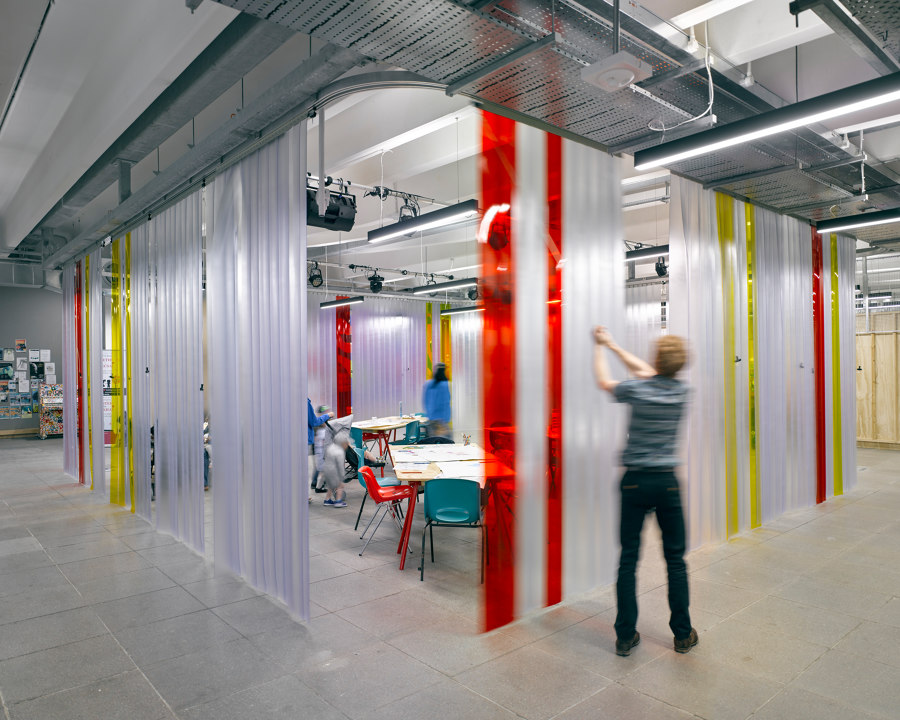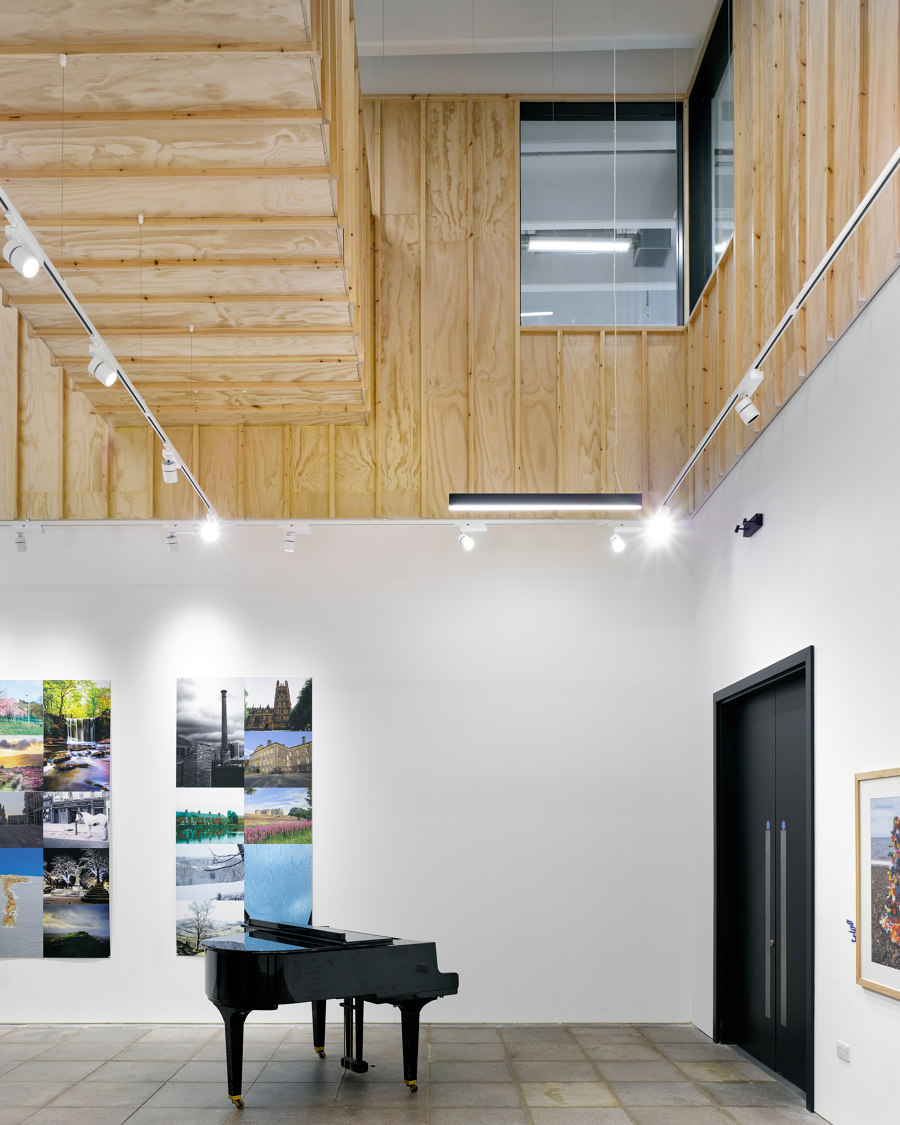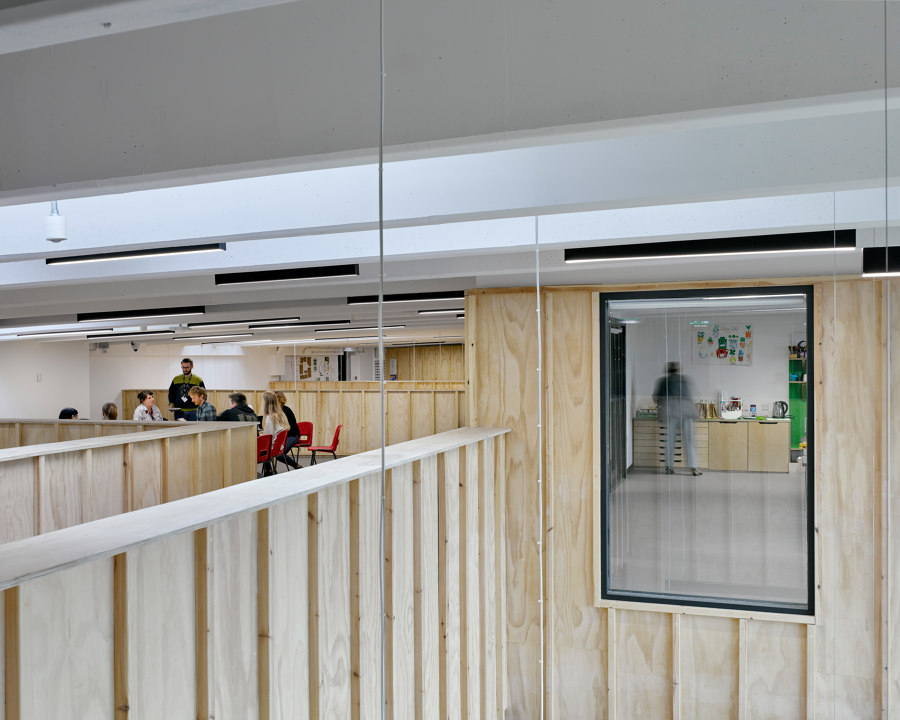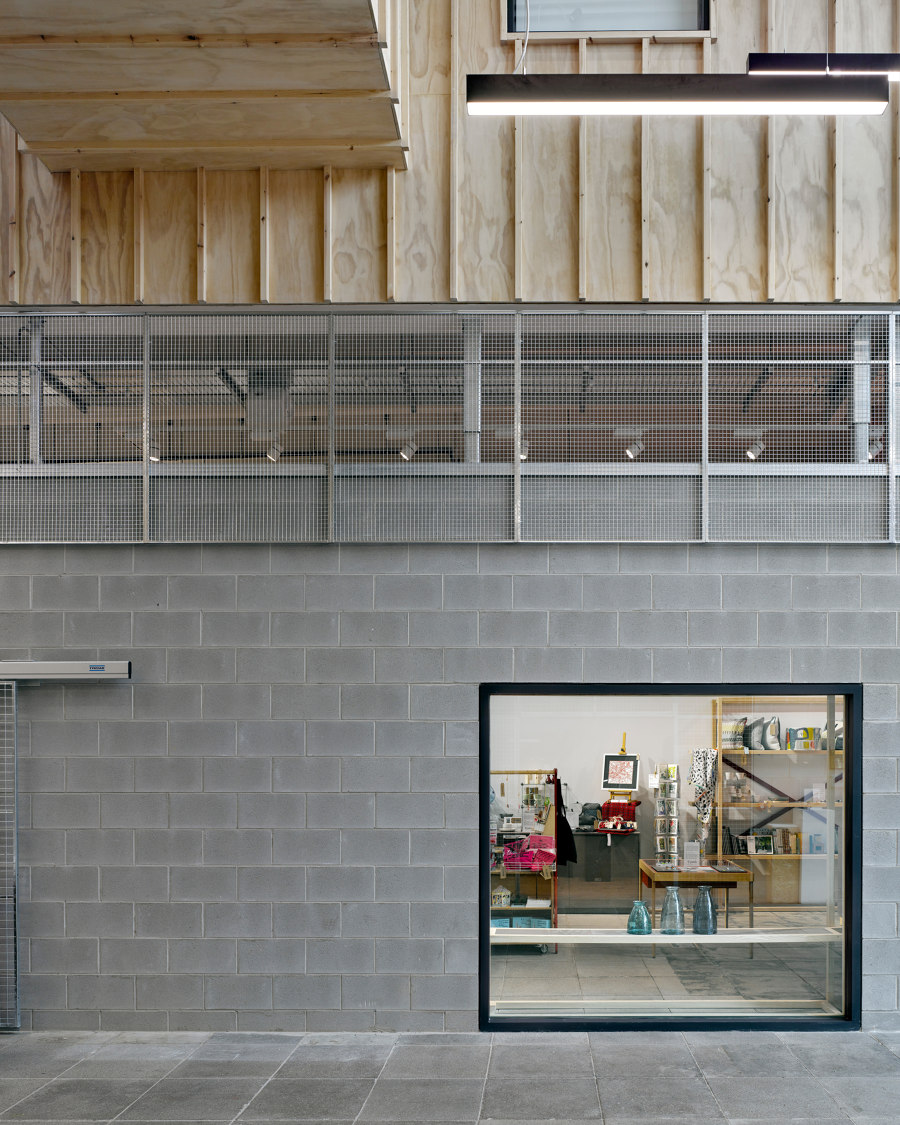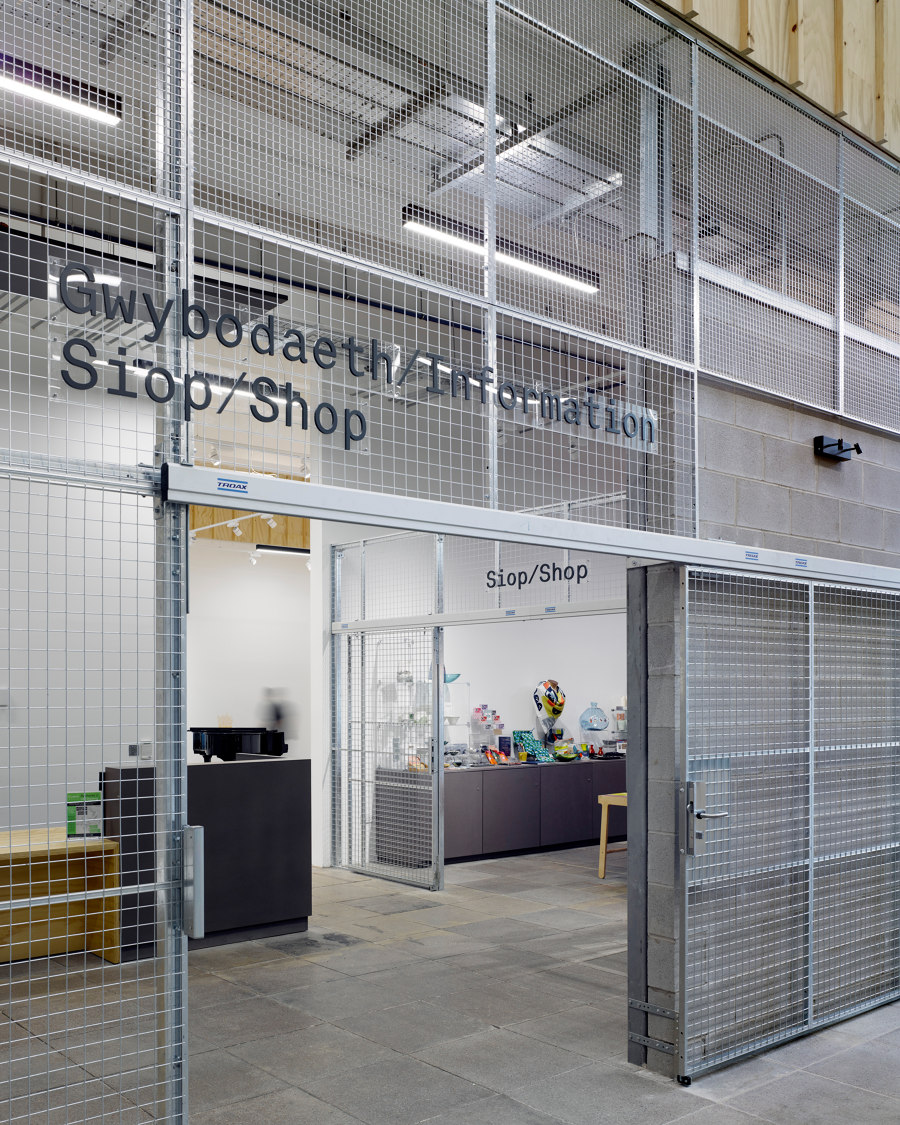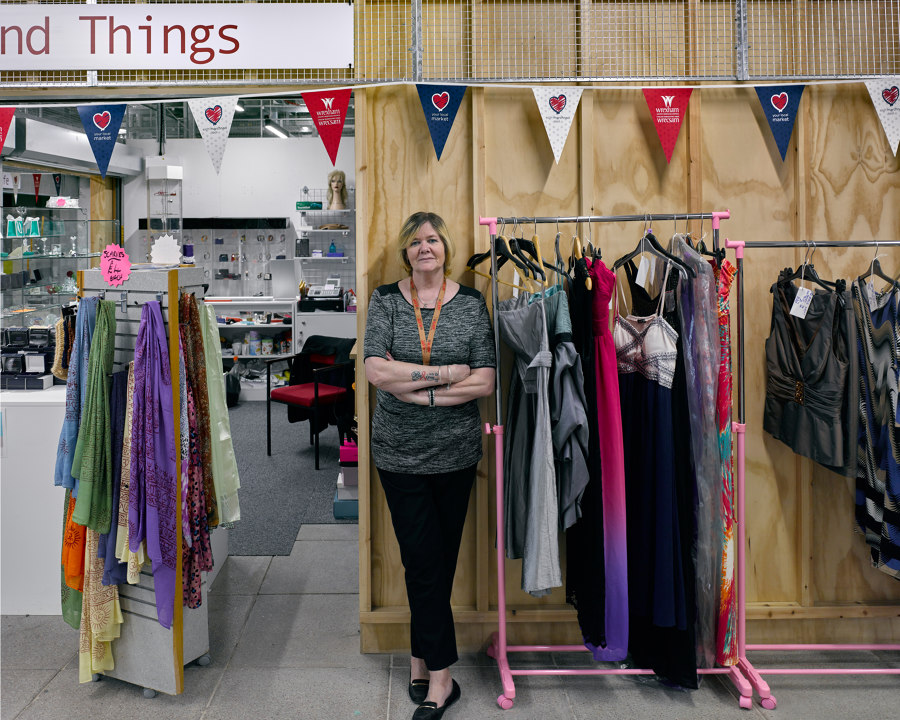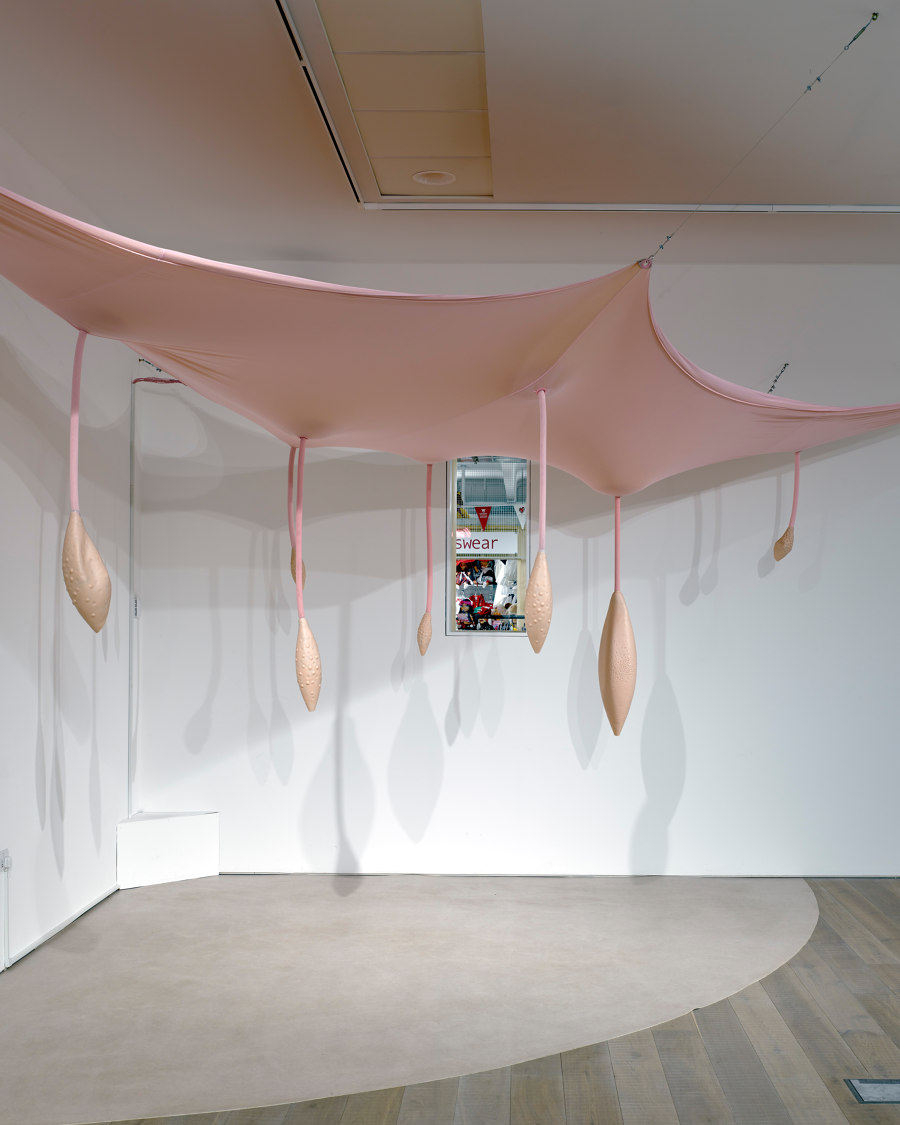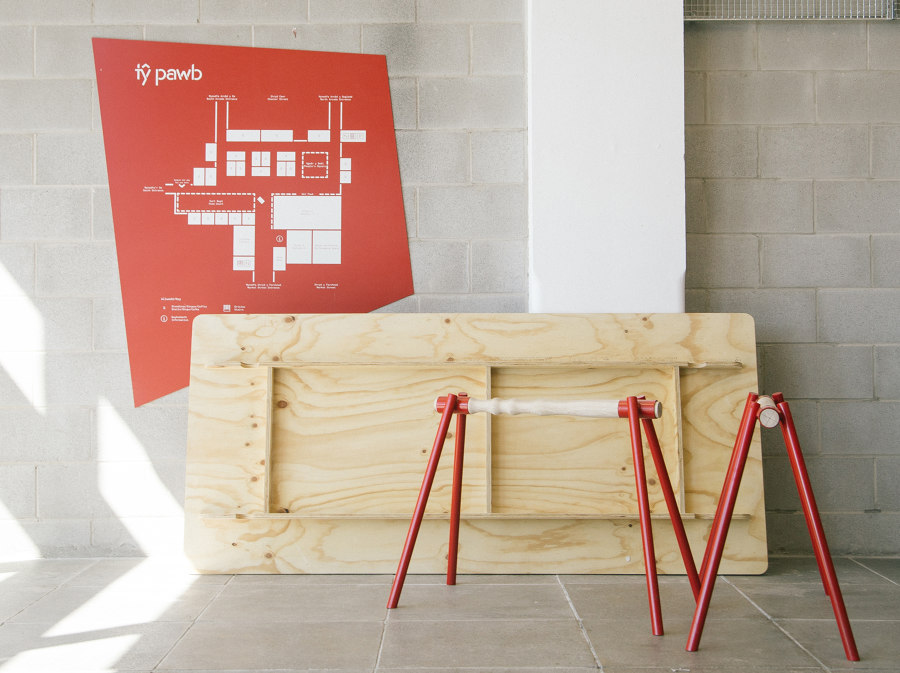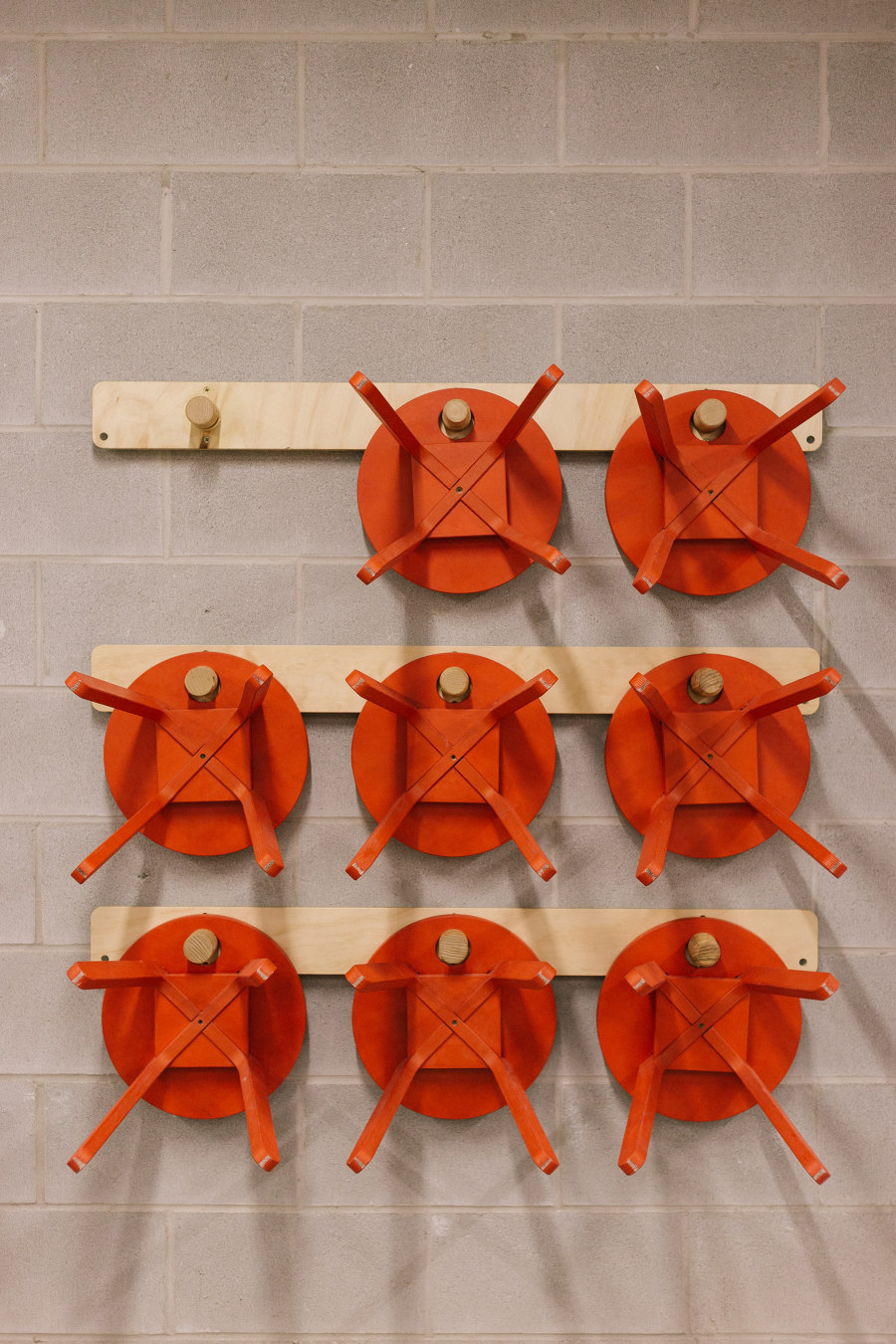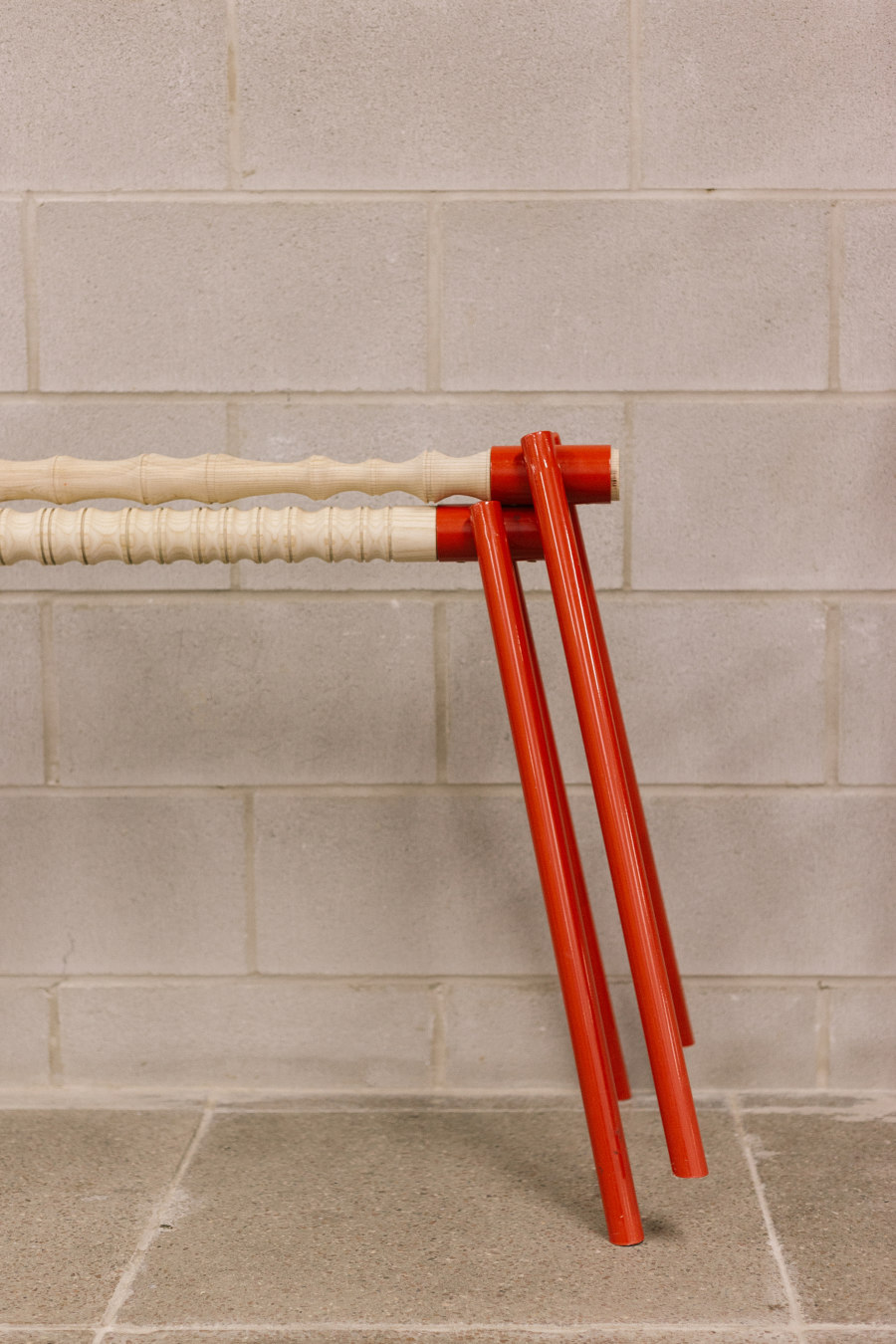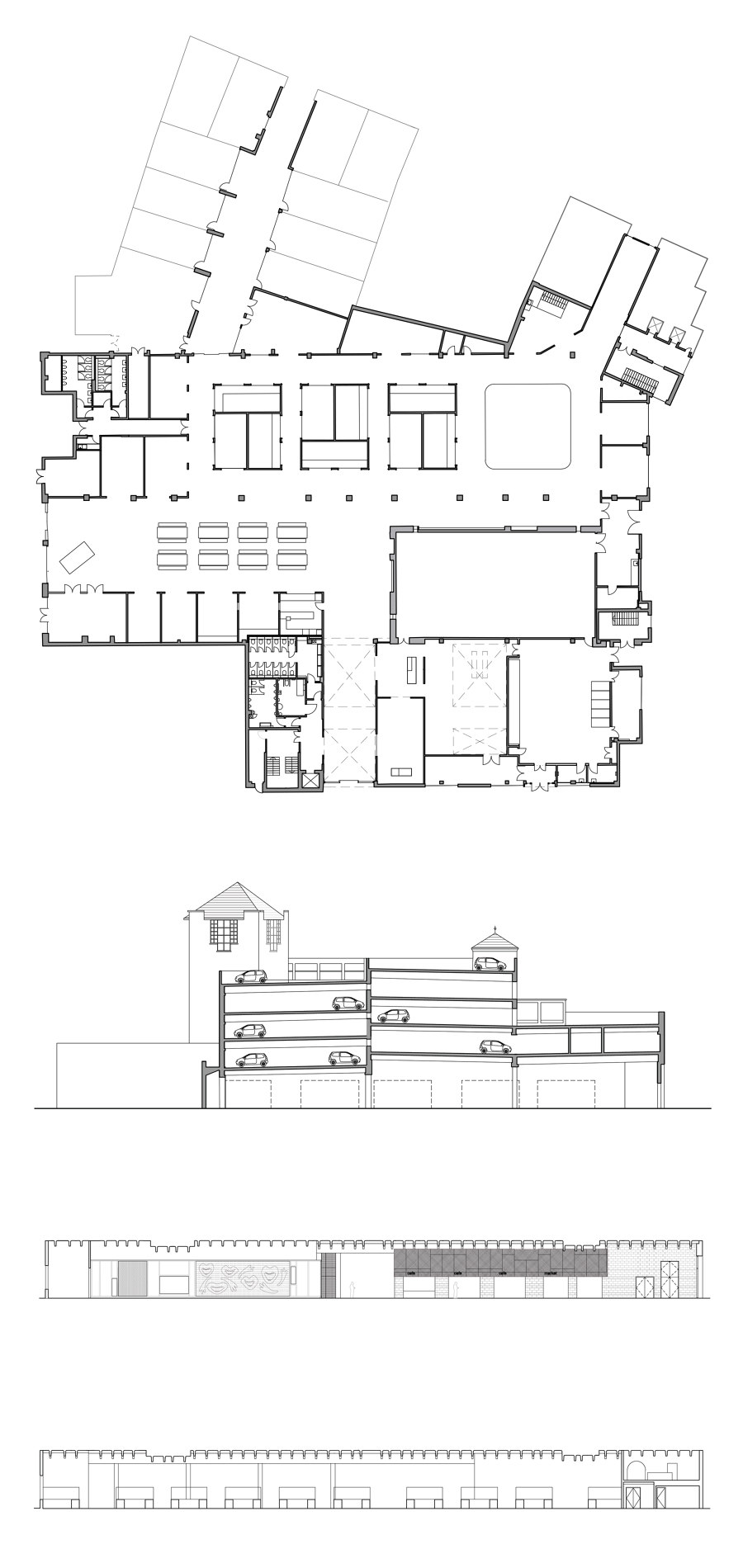Tŷ Pawb (Everybody’s House) is a new model for an arts venue, designed by architects Featherstone Young. It relocates Oriel Wrecsam - formerly Wrexham Arts Centre - within one of the town’s three market spaces, The People’s Market: an existing purpose-built 1990s multi-storey car park and market hall. The new facilities include art galleries, market stalls, performance space, a learning centre, cafes and bars. Studios and meeting rooms for artists and gallery staff overlook newly created double-height spaces.
The project, commissioned by Wrexham County Borough Council, with support from Arts Council of Wales and the Welsh Government, presents a new typology which reinvents underused public infrastructure enlivening it with cultural uses, ensuring the sustainability of both during financially challenging times.
Architects Featherstone Young and the Tŷ Pawb team have had to rethink the civic role of cultural programming, creating a new model which challenges the traditional art gallery environment and offers a looser and more experimental space that is rooted in the community and everyday life. Featherstone Young refers to this as the ‘baggy space’ concept, where designers and curators create a light-touch framework which enables others to fill the gaps. This approach helps create a place that can be used habitually, and opens up the potential for meaningful experiences amongst a wider public.
The building is strategically located between the town centre and edge-of-town attractions, which, together with the market and car park uses, offers opportunities to attract more people to the arts, as they traverse it as a cut-through route. The retrofit design scheme introduces cuts into the existing precast concrete building fabric bringing natural light deep into the plan and creating dramatic vertical connections between floors.
Laterally a new streetscape behaves as an extension of Wrexham’s town centre, and plays on the longstanding, popular use of the building as a shortcut to cross the town and is conveyed through the use of squares, signposts, billboard and street furniture. An array of facilities is housed within the building: a mix of arts spaces, market trading and food retailers occupy the ground floor, with studios and offices on the first floor, whilst the original car park remains in use on the upper storeys.
When the centre reopened locally in April it welcomed back market stall owners to trade alongside new food retailers in new light-filled dynamic space featuring exhibition spaces which are being programmed by Tŷ Pawb. Users now pass through the transformed spaces for a very different experience: bright and spacious volumes animated by cultural activities and, more prosaically, longer trading hours that include early morning coffee and late-night drinks.
The transformation of the building is announced externally with a new entrance and the graphic treatment of the external facades, employing the new Tŷ Pawb name and logo designed by Cardiff-based agency Elfen. This signals Tŷ Pawb’s presence within the town, and in the future will function as a blank canvas for a changing display of artwork.
Key landmarks within the Tŷ Pawb interior streetscape include:
Wal Pawb (Everyone’s Wall), a large-scale, revolving billboard with rolling programme of artwork to be selected by Oriel Wrecsam and local market traders; the first artwork is by artist Katie Cuddon.
Sqwar y Bobl (The People’s Square), a new flexible space at the centre of the market that provides a testing ground to experiment and to bring together the arts, market and community users.
Other facilities include:
Gallery 1
Gallery 2
Performance space
Shop
Food hall
Market stalls
Administration spaces on the first floor
At Tŷ Pawb the architect’s ‘baggy space’ concept is particularly visible at Sqwar y Bobl, which is demarcated by heavy industrial plastic sheets suspended on rails as curtains. Translucent yet weighty enough to divide the space when concurrent activities are programmed, they allow for flexibility, enabling informal, spontaneous events.
Featherstone Young has worked closely with furniture maker Tim Denton, who, in the spirit of Tŷ Pawb’s mission to engage the public, has designed the furniture and built it collaboratively with community groups in workshop sessions. Primary school pupils worked on the reception desk and a number of storage boxes; area artists made the supports for the Sqwar y Bobl trestle tables; shop furniture and market hall benches were built by local college students; a wood-working group latheturned the stool hooks and table legs; and members of the public participated in workshops to create the flexi-space stools and boxes for Siop//Shop. As well as learning key skills, participants have contributed visibly to the legacy of Tŷ Pawb.
Sarah Featherstone said: “From the outset this was a very exciting project for us. The mix of facilities presented a challenge from which we developed a new model that breaks from the traditional art gallery environment and provides an opportunity to be more relevant to people in their everyday lives. The car park typology also presented us with challenges – notably, a heavy concrete structure with low ceilings and deep plan, which we opened up to be lighter and more welcoming. A palette of raw, robust materials with a streetscape aesthetic provides a uniform neutral backdrop to the wide spectrum of activities that will bring the building to life.”
Jo Marsh, Creative Director Tŷ Pawb said: “It’s our ambition to create a programme centred on dialogue, and our new home is a flexible space in which we can engage the public in a variety of ways. We want Tŷ Pawb to be local and rooted, and also nationally-facing; for it to be as much a part of daily life for people living in Wrexham as it is a destination for people living further afield.”
Phil George, Arts Council of Wales, said: “Arts Council of Wales is a profound believer that cultural activity can be a driver for regeneration and bringing places to life. We are thrilled with the siting of the arts centre in one of the town’s most famous markets with strong traditions and associations for young people. Featherstone Young responded so imaginatively to the challenge of this building. It will be a valuable and energising resource.”
Harry James, Architect Assessor for Arts Council of Wales, said: “Tŷ Pawb is an exciting proposition; it creates new opportunities to a much wider audience than traditional arts centres… and should provide an exciting model for others to follow.”
Design Team:
Featherstone Young: Sarah Featherstone, Benedetta Rogers and Ed Soden
Project Architects: Benedetta Rogers and Ed Soden
Structural Engineer: Civic up to stage 3; Haltec stage 4-5 (appointed by Wynne Construction)
Services Engineer: Ingine, formerly Michael Popper Associates, up to stage 3; ESD stage 4-5 (appointed by Wynne Construction)
Civil Engineer: Civic up to stage 3, Haltec stage 4-5
Landscape Design: Grant Associates
QS: Stockdale stage 3, SP Projects stage 4-5
Building Contractor: Wynne Construction
Artist/furniture maker: Tim Denton
Graphics/signage: Elfen
